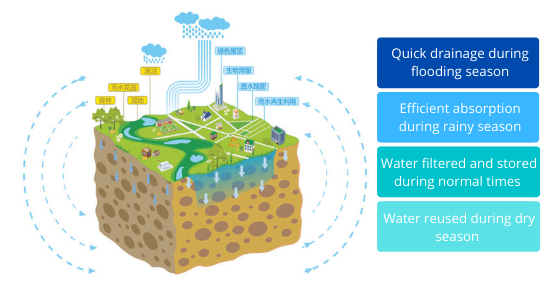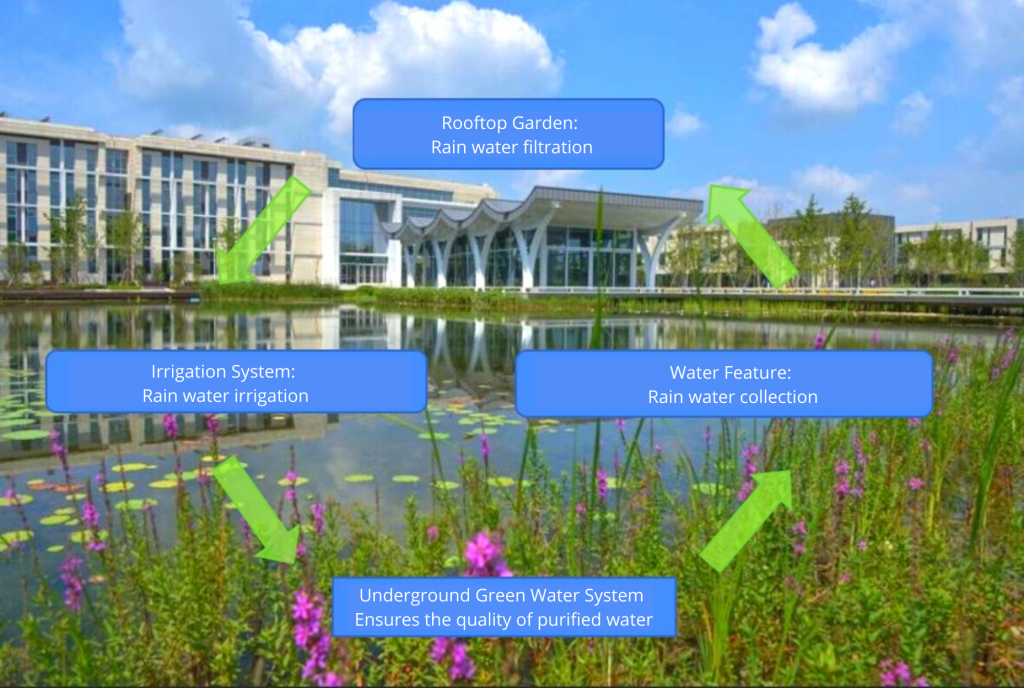Green Campus
LEED Certification
Duke Kunshan University’s LEED certification
Duke Kunshan University obtained a green building certification from the U.S. Green Building Council (USGBC) in March 2016, becoming China’s first, and only, university to receive the “Leadership in Energy and Environmental Design” (LEED) certification for all of its buildings. Among them, the Academic Building and Conference Center obtained LEED gold certification, and the Student Residence Hall, Faculty Residence, and Service Buildings have obtained LEED Silver certification. Like Duke University, the LEED certification reflects Duke Kunshan’s commitment to green buildings and green design. This commitment ensures that all new buildings and major repairs comply with Duke Kunshan’s sustainable building policies while achieving the goal of building energy- and water-saving campus.
‘’The design and construction of the Duke Kunshan University campus embodies the high integration of green building design concepts, advanced technology and traditional Chinese water culture. The perfect combination of these three components brings out the campus’ outstanding characteristics in terms of energy conservation and environmental protection. Campus life is an important part of the rich experience that Duke Kunshan University provides to teachers and students. The achievement of such an honor is an affirmation of Duke Kunshan University's goal of building a world-class university. "
- Jingnan Liu, Inaugural Chancellor of Duke Kunshan University and Academician at the Chinese Academy of Engineering
"We are very pleased to see how Duke Kunshan became the first university campus in China to be LEED certified. The design and operation of the Duke Kunshan University campus have thoroughly implemented the green building concept, which is very important to the sustainable development of the world. This extraordinary achievement will set a good example for educational institutions in China and around the world."
-Mahesh Ramanuham, Chief Operating Officer, U.S. Green Building Council
Sponge Campus
What’s a “sponge city”?
In October 2015, the State Council of the People’s Republic of China issued guidelines calling for building “sponge cities” to achieve the best control and utilization of rainwater resources. Today, areas that can achieve the integration of water absorption, water storage, water seepage, water purification, and water use are still very few in China, and even in the world. However, on the Duke Kunshan campus, these “future technologies” that originally existed only in people’s imaginations have become a reality. The Duke Kunshan campus has successfully used the surrounding waterscape system to achieve natural infiltration, natural purification and the reuse of rainwater.

Duke Kunshan University’s Sponge Campus:
Water is a core element in Duke Kunshan University’s landscape design. The entire campus has been designed to successfully use the surrounding waters system to achieve natural infiltration, natural purification and the reuse of rainwater. The water circulation system is composed of four complementary parts: the natural water features around the campus are responsible for rainwater collection and flow control; the roof garden helps rainwater infiltration; the underground filtration system ensures water quality; the irrigation system makes full use of treated rainwater for irrigation. Since the campus opened in the fall of 2014, all the irrigation on the campus has only used recycled rainwater, reducing water consumption by 100% and saving roughly 10 tons of water per day on average.

Environmental-Friendly Campus
Air filtration system:
The air filtration system is adopted throughout campus to ensure the circulation of indoor and outdoor air. The filtration system in the Innovation Building, where Duke Kunshan’s science laboratories are located, is equipped with HEPA (high efficiency particulate air) filters, which can effectively prevent dust and filter out harmful substances in the air.
All classrooms in the Academic Building are equipped with carbon dioxide detectors. When the indoor carbon dioxide reaches a certain concentration, fresh air will be added. The air system will also accelerate air circulation and increase oxygen levels, ensuring teachers and students can maintain focus in the classroom.
Energy saving technology:
All buildings at Duke Kunshan University have used a number of internationally leading energy-saving and emissions-reduction technologies for the efficient use of energy, lighting, hot water, electromechanical systems, etc., in order to create a “low-carbon” campus. Most buildings use large-area glass to maximize the use of sunlight, thereby reducing the need for lighting. In addition to natural lighting, dimmers are installed in areas with high circulation such as classrooms, gyms and team rooms, to enable teachers and students to manually adjust brightness levels, making possible a more efficient use of energy. The campus buildings are equipped with high-efficiency water-saving devices that can reduce water consumption by 38%, saving up to 12,000 tons of water each year. The Conference Center and the Service Building are equipped with solar thermal panels on the roof, with a total area of 675 square meters that can generate 470,000 kilowatt-hours of renewable energy each year. This energy is then used to provide hot water on campus.










